UCR Ranks 33rd Nationally Among Public Universities for Best Value
Campus also places 5th for making an impact, 11th for financial aid in Princeton Review's 2025 rankings.
Riverside’s Little Known Athletic Parks: Early Home of Bicycle Racing

With the invention and enhancements on the safety bicycle in the late 1880s, the interest and use of the bicycle in the United States increased tremendously. The safety bicycle is very similar to the bicycle of today. The bike had two wheels of identical size instead of the earlier cycles with one small wheel in back and large wheel in front which was the one that was pedaled. With the new safety bicycle, the rear wheel was pedaled via a chain and sprocket. This made the bicycle much safer and also made it capable of more speed.
Riverside also experienced bicycle fervor. A number of bicycle shops opened and in 1891 the Riverside Wheelmen’s Club was organized with W. K Cowan as president.
The Riverside Y.M.C.A in early 1892 opened a new park on Fourth Street near the spur of the motor track (streetcar). This track, called Athletic Park, opened on February 22, 1892, Washington’s birthday. The events that day included track events such as races, jumping and throwing. There were also two bicycle races of ¼ mile and one mile length. The day ended with a baseball game between Riverside and Claremont College. A second Y.M.C.A Field Day occurred on May 30 with similar events except the day ended with a football game between Chaffee College and the Y.M.C.A team.
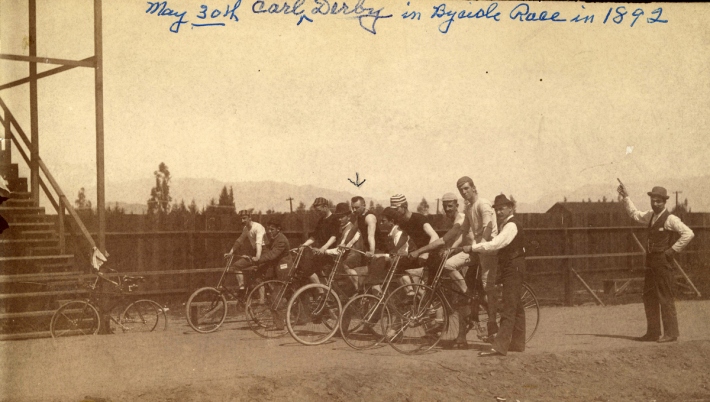
Soon the Riverside Wheelmen decided that the Y.M.C.A. Athletic Park would be an excellent site for bicycle road race between various clubs in Southern California. The date chosen was September 9, Admission Day for the state of California. The club members worked hard in preparing the track and setting up longer distance courses and teams were invited.
The eighteen and one-fourth mile handicap road race began at the corner of Main and Eighth (University) Streets .and proceeded down Magnolia Avenue and then returned to the starting point. The course was described as a smooth and hard surface with shade provided by trees on the divided boulevard of Magnolia Avenue. In the afternoon races at Athletic Park from two miles to 50 yards were run.
On the day of the race over 200 wheelmen from all over California gathered in Riverside. The first race, the longer handicap road race, was won by a newcomer to the sport. Eighteen-year-old Riversider Carson Shoemaker won with a time of one hour, one minute and twenty seconds. The young, skinny, gum chewing lad would go on to race and win a good number of races all over the country over the next number of years. In the afternoon over 2500 spectators crowded the stands at Athletic Park for the races held there.
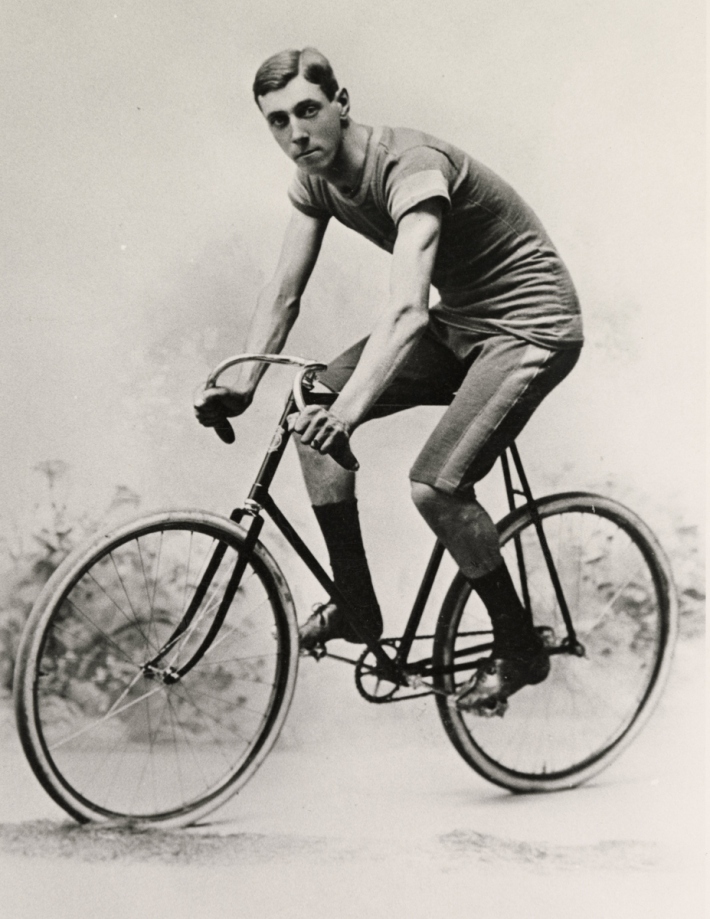
The day ended with a banquet at the Arlington Hotel where the prizes for the day were presented. The Arlington Hotel was located on the northwest corner of Eighth (University) and Lime Streets.
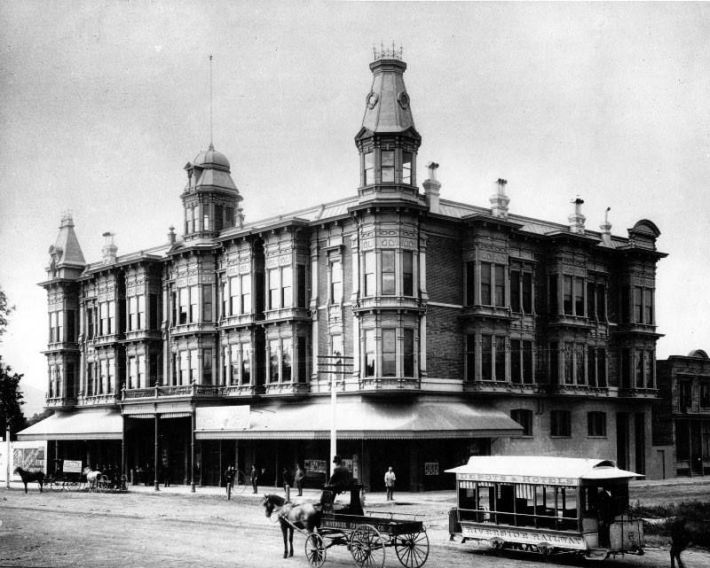
An interesting notice appeared a few days later in the paper of the day explaining that the referee had declared the one-mile open race as “no race” because the bicyclists did not race within the time constraints, the racers having lagged in their efforts. This upset some of the attendees who had bet on the race.
For the next two years, through 1894, the Riverside Wheelmen Bicycle Club held the annual races at the Y.M.C.A. Park. Races and other events were held on September 9, Admissions Day. In 1893 Carson Shoemaker again won a race, that year the five-mile run. In between the morning road races and the afternoon events at the Athletic Park, there was a three-inning baseball game between players from the courthouse and from various Riverside banks. The courthouse boys won 13 to 12.
However, in 1895 changes in venue would materialize. There was a general feeling that a better facility was needed for both the baseball club and the bicycle club. With the support of some of Riverside’s leading citizens and the approval of both clubs plans were made. Land was obtained in the shadow of North Hill with the boundaries of Houghton and First Streets and between Cedar and Locust Streets. A third mile track was constructed and promised to be second only to the one in San Jose. The Arlington Street Railroad ran right up to the grounds for easy access for spectators. Ground was broken in early May and plans were made to hold the annual Admissions Day Races on September 9 at the new location. How quickly projects progress and were completed back then! In June the Y.M.C.A voted to terminate their lease on the old park grounds and to sell fence, grandstand, and other items to the new Athletic Park.
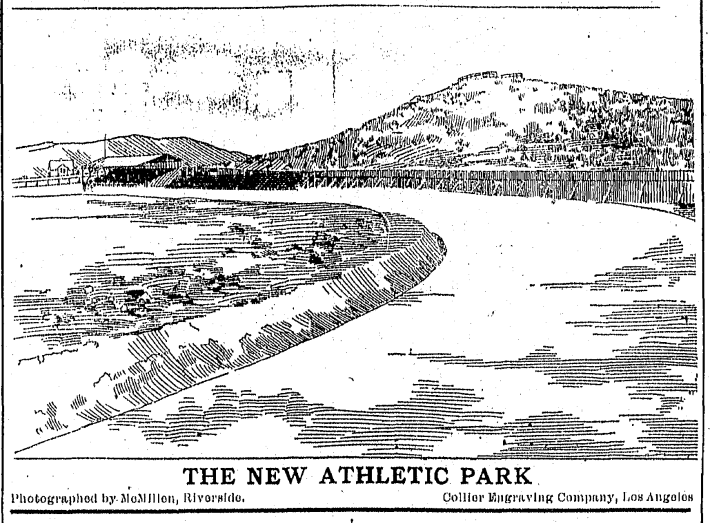
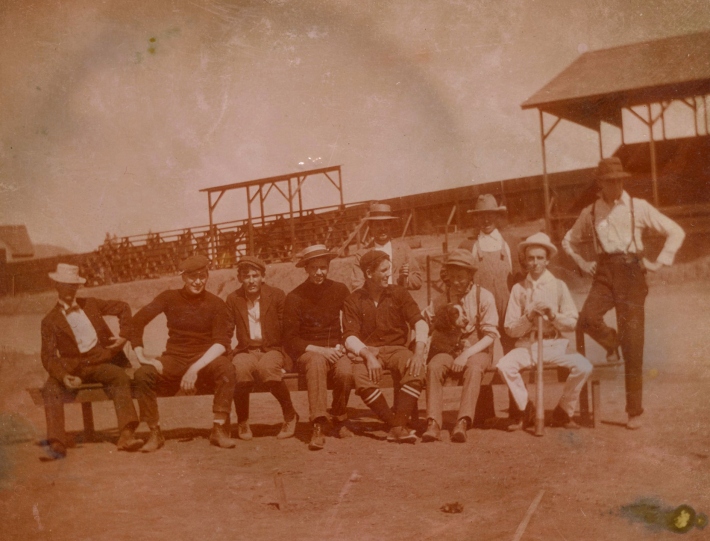
As time drew closer to the September 9 opening praise for the new facility spread. The track was said to be the only kite-shaped bicycle track in the world and had the best curves and banks. Dressing rooms, even with showers, were located under the grand stand. The excitement brought in new members as thirty new bicyclists joined the Riverside Wheelmen making them twice as large as any other club in Southern California.
On September 9 the Fourth Annual Admissions Day Races were held. Crowds of people from all over California filled Riverside streets. In the morning the longer road races were held and, in the afternoon, the shorter races ushered in a new era with the official opening the new Athletic Park. Riverside now had a world class track to draw bicycling clubs and visitors who came to cheer on their teams.
The last race at Athletic Park was on September 9, 1900, the Ninth Annual Race. The featured race was a twenty-five-mile team race for a $250 trophy. Riverside felt good about this race as they had Cason Shoemaker as their main rider and they had won a couple times already. They would have to beat the Oberon Club of Los Angeles, who had won in 1899, and several other teams.
An unusual and special race was held in 1900. The race was between seventy-year-old E. R. Armington, the oldest rider in the county, and three and half year-old Miss Alice Pequegnat. The gentleman had to circle the track twice while the young girl only had to make one lap. Miss Pequegnat one this unique race of the day.
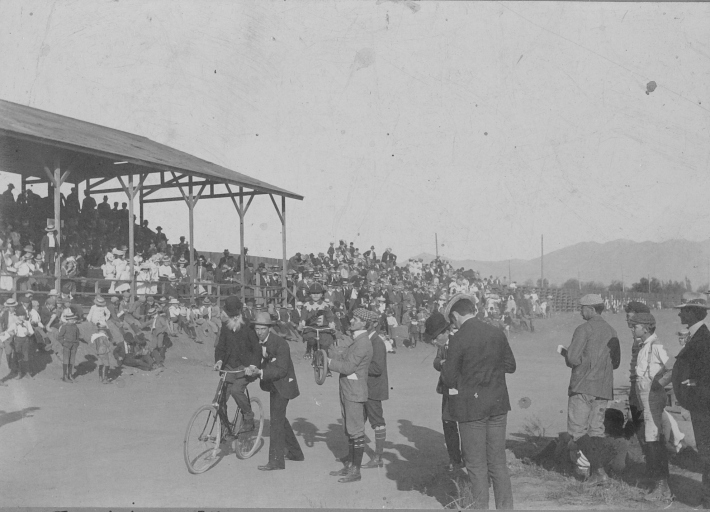
Disaster struck in 1900 as several accidents occurred. The most serious was in the last race of the day, the 25-mile team race. The teams were from Riverside, Los Angeles, Oberon Club (also from Los Angeles) and Covina. During the twelfth mile a serious collision happened which included Carson Shoemaker. Shoemaker was the most seriously injured and was carried off the track unconscious. He did not regain consciousness until almost 10 o’clock that night.
This would be Carson Shoemaker’s last race as a cyclist. This would also be the last race at the Athletic Park. The number of those entering had diminished and interest had also deceased. In March of 1902 the bleachers were sold to Chemawa Park, run by the Riverside and Arlington Railway.
One hundred and thirty-one years later the Riverside Wheelmen’s Club still exists only with the name the Riverside Bicycle Club. They will be participating on Saturday, October 8 in the Riverside Citrus Classic Bike Ride which supports educational programs in the Riverside Unified School District. Sadly, they can no longer race around the classic track below North Hill, but they are still spinning their tires as they ride the streets of Riverside.
Let us email you Riverside's news and events every morning. For free!